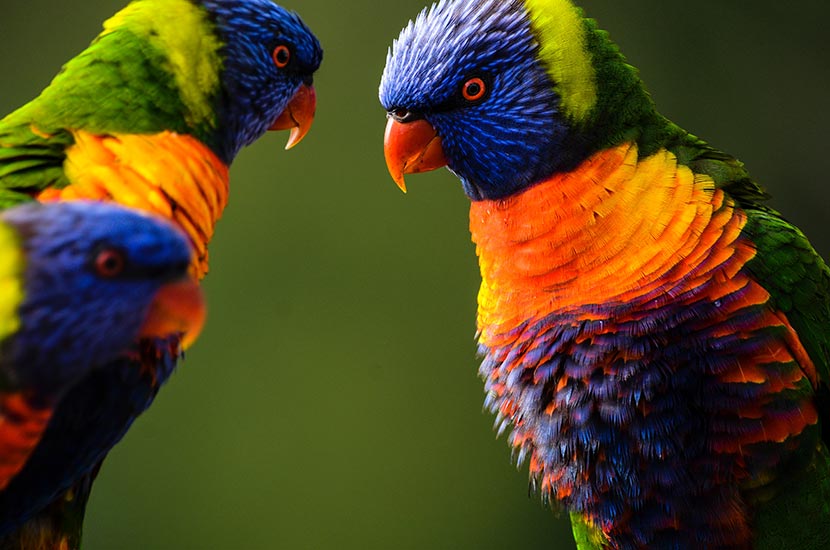By Kristin Claricoates, DVM
Psittacine beak and feather disease is a contagious circovirus that can have two forms: an acute and a chronic form. This disease can be passed on from the parents of a bird or by other affected birds in the same household. As the name implies, the beak and feathers are often affected by this disease. Additionally, the immune system is suppressed often leading to secondary bacterial infections as a result of this viral infection.
In young birds, psittacine beak and feather disease- or PBFD- can be an acute infection that causes death within just a few months. You could see nonspecific symptoms of lethargy, vomiting, diarrhea, and loss of appetite are present. In this acute form, the signs of feather and beak changes are typically not visible, as the virus’ effects occur so quickly, and the infected birds die so rapidly. Other young birds can undergo seroconversion and can thereby survive and recover from this disease.
Older birds typically are affected with the chronic form of the disease, and signs typically manifest when the birds molt. Abnormal feathers replace the molted normal looking feathers. Down feathers tend to be the first types of feathers affected. Eventually, the feather follicles constrict and all feather growth stops. Birds’ beaks are also affected with abnormal growth and beak deformity.
Of the birds affected with beak and feather disease in the United States, cockatoos tend to be commonly visibly affected, and while lovebirds can also be affected, they may not show any signs of the disease at all. Budgies, lories, lorikeets, Eclectus, and African grey parrots are also commonly seen to be affected, although this virus can affect all old world and new world parrots. In African grey parrots, this disease appears to often be confined to the tail feathers, or like lovebirds, may not show any signs of the disease. Eclectus parrots tend to show signs with delayed molting or poor-quality feathering. Cockatoos may show signs of beak lesions in addition to deformed feathers.
Initial signs of beak and feather disease may be poor molting, discoloration of feathers in the form of less exuberant colors or a transition from one color to another color entirely, and stress lines in feathers.
Management by prevention of PBFD is the key to this disease as sadly, there is no treatment currently for this virus, only management of clinical signs. In chronic forms of PBFD, treatment is aimed at preventing secondary infections. If only the feathers appear affected, a bird may have a moderately good quality of life. Sadly, this disease is progressive and will ultimately result in death. When the beak and nails become infected, euthanasia is the kindest option.
As there is no cure for PBFD, only medical management, it is important to screen all new birds coming into a home to ensure they are not affected with this virus for the safety of all birds in your home.

